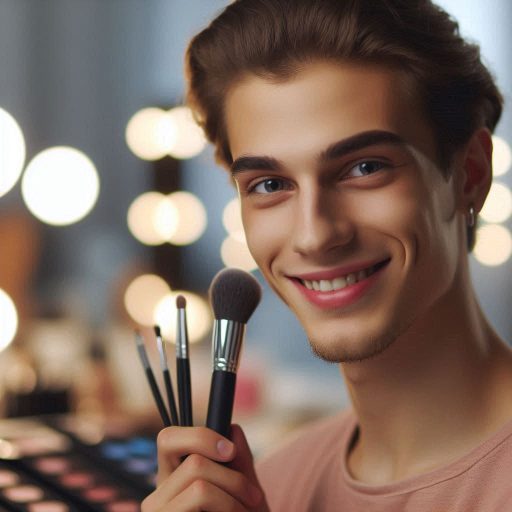Introduction
Special effects (SFX) are vital in horror films, blending creativity and technology to craft terrifying experiences.
They encompass practical effects like makeup and prosthetics, as well as digital effects like CGI.
SFX bring monsters, gore, and supernatural phenomena to life, making scenes more convincing and immersive.
From eerie soundscapes to unsettling visuals, SFX enhance the overall impact of a horror film, engaging the audience‘s senses in unique ways.
Without these effects, horror films would struggle to evoke the same intensity of fear.
SFX play a crucial role in evoking fear and building suspense.
They transform ordinary scenes into nightmares, amplifying the sense of dread.
Practical effects such as realistic blood and gore contribute to visceral horror, shocking viewers and creating lasting impressions.
Digital effects add layers of supernatural terror, crafting ghosts or monsters that defy reality.
Sound effects further heighten tension, making eerie sounds and sudden noises integral to the suspenseful atmosphere.
Combined, these elements manipulate the audience‘s emotions, making horror films more gripping and effective in eliciting fear.
By leveraging SFX, filmmakers can create unforgettable moments that stick with viewers long after the credits roll.
The strategic use of visual and auditory effects keeps audiences on edge, making each scare more impactful.
Overall, SFX are indispensable in horror cinema, shaping the genre’s ability to terrify and thrill.
They are not mere additions but essential tools in crafting immersive and memorable horror experiences.
Setting the Tone
Sound effects (SFX) play a crucial role in setting the tone of horror films.
They create an atmosphere that immerses the audience in fear.
Without SFX, horror films would lose much of their chilling impact.
The right sound effect can transform an ordinary scene into a spine-tingling experience.
Use of Sound Effects to Create Tension
Sound effects are instrumental in building suspense and tension in horror films.
Transform Your Career Today
Unlock a personalized career strategy that drives real results. Get tailored advice and a roadmap designed just for you.
Start NowCreepy whispers, sudden loud noises, and eerie ambient sounds intensify the emotional impact.
For instance, the sound of a creaking door can make a seemingly safe space feel ominous.
Unexpected noises can heighten anxiety, making viewers anticipate a scare.
The strategic use of silence also amplifies tension, making every sound more startling.
SFX designers craft these sounds to trigger instinctual fears, keeping the audience on edge throughout the film.
Visual Effects to Enhance the Atmosphere
Visual effects (VFX) complement sound effects by enhancing the overall atmosphere.
They help create a believable and immersive horror setting.
Dark, foggy environments, distorted imagery, and unsettling lighting amplify the sense of dread.
For example, a shadowy figure emerging from the darkness can evoke fear more powerfully with visual effects.
Adding layers of fog or dimming lights can make a scene more mysterious and foreboding.
VFX also help in visualizing supernatural elements, such as ghosts or monsters, making them appear more real and frightening.
Together, sound and visual effects work in harmony to create a compelling horror film experience.
They set the tone, build tension, and enhance the atmosphere, making every scare more impactful.
This combination ensures that horror films captivate and terrify audiences, leaving a lasting impression.
Read: Marketing Tips for Growing Your Makeup Artist Brand
Creating realistic fear‘
When it comes to horror films, one of the most important aspects is the ability to create realistic fear among the audience.
Sound effects play a crucial role in enhancing the overall atmosphere and setting the tone for the film.‘
From the creaking of a door to the haunting whispers in the dark, sound effects help to build suspense and tension, keeping viewers on the edge of their seats.
The use of eerie music and chilling screams can elicit a visceral response, making the audience feel truly frightened.
Make-up and prosthetics to bring monsters and ghosts to life‘
In many horror films, the use of special effects makeup and prosthetics is essential for bringing monsters and ghosts to life.
Transform Your Career Today
Unlock a personalized career strategy that drives real results. Get tailored advice and a roadmap designed just for you.
Start NowThrough the skilled hands of makeup artists and special effects teams, terrifying creatures are born.‘
The intricate details of the prosthetics, from the bulging veins to the rotting flesh, add a sense of realism to the monsters on screen.
This attention to detail makes the creatures feel tangible and elicits fear in the audience.‘
Additionally, makeup and prosthetics can transform actors into grotesque beings, adding an extra layer of horror to the film.
The ability to see these monsters in their full, terrifying glory enhances the fear factor and makes for a more immersive viewing experience.
Blood and gore effects to shock and scare audience‘
Another crucial element of horror films is the use of blood and gore effects to shock and scare the audience.
Whether it’s a gruesome murder scene or a terrifying transformation, practical effects can leave a lasting impact on viewers.‘
The sight of blood splattering, limbs being torn apart, or bodies mutilated can evoke a visceral reaction from the audience, eliciting feelings of disgust and fear.
These effects can push the boundaries of what is comfortable and challenge viewers’ perceptions of horror.‘
By using practical effects instead of relying solely on CGI, filmmakers can create a more authentic and horrifying experience for the audience.
The realism of the effects can make viewers feel as though they are witnessing the horror unfold before their eyes, adding to the overall impact of the film.
Read: Special Effects Makeup Kits for Beginners
Enhancing the storytelling
Horror films rely heavily on special effects to create a chilling and immersive experience for viewers.
Visual effects to depict supernatural elements
Visual effects play a crucial role in bringing to life the supernatural elements that are central to many horror movie plots.
From ghostly apparitions to blood-curdling monsters, filmmakers use SFX to make these frightening entities seem eerily real.
By using cutting-edge technology, they can create visually stunning scenes that keep audiences on the edge of their seats.
Sound effects to build anticipation and reveal plot twists
In addition to visual effects, sound effects are equally important in building tension and suspense in horror films.
Creaking floorboards, howling winds, and distant screams all serve to create an atmosphere of dread and foreboding.
Sound effects can also be used to foreshadow scary moments or signal the arrival of a terrifying creature.
Furthermore, subtle changes in sound can hint at upcoming plot twists, keeping viewers engaged and eager to see what happens next.
Transform Your Career Today
Unlock a personalized career strategy that drives real results. Get tailored advice and a roadmap designed just for you.
Start NowBasically, special effects, both visual and sound, are essential tools in the filmmaker’s arsenal when it comes to creating a memorable and truly terrifying horror film.
Read: The Role of Makeup Artists in Fashion Shows

Engaging the Audience
SFX to Create Jump Scares and Thrill Viewers
Special effects (SFX) are pivotal in creating the spine-chilling moments that define horror films.
Jump scares, often relying on sudden visual or auditory cues, are a staple.
These moments use SFX to surprise viewers and evoke a primal fear response.
Imagine a sudden flash of light combined with an eerie sound; this shock effect can make audiences jump out of their seats.
Effective jump scares rely on the careful timing and execution of SFX, ensuring they feel both unexpected and impactful.
The element of surprise, when executed with precision, amplifies the horror experience, keeping viewers on edge throughout the film.
Immersive Experience Through Realistic Effects
Realistic SFX are essential for creating an immersive horror experience.
When effects look authentic, they pull viewers deeper into the film‘s world.
High-quality makeup, prosthetics, and CGI can make grotesque creatures and terrifying scenes appear real.
This realism enhances the emotional response of the audience, making the horror feel more immediate and believable.
For example, lifelike blood splatter and gory details make horror scenarios more intense.
When audiences believe in the reality of what they see, the fear becomes more palpable.
This immersion is crucial for maintaining suspense and engaging viewers throughout the film.
Together, these elements of SFX‘jump scares and realistic effects‘work synergistically to create a horror experience that thrills and immerses.
The careful integration of sudden shocks and believable visuals ensures that audiences remain engaged and emotionally invested in the film.
By harnessing these techniques, horror filmmakers can craft unforgettable scenes that resonate with viewers long after the credits roll.
Read: How to Market Yourself as an SFX Artist
Impact on box office success
When it comes to horror films, special effects play a critical role in determining the success of a movie at the box office.
Transform Your Career Today
Unlock a personalized career strategy that drives real results. Get tailored advice and a roadmap designed just for you.
Start NowAudiences today have high expectations when it comes to the visual effects used in horror films, and filmmakers must deliver on those expectations in order to draw in viewers and drive ticket sales.
SFX can make or break a horror film
One of the ways in which SFX can impact a horror film’s box office success is by creating a truly immersive and terrifying experience for the audience.
High-quality special effects can transport viewers into the world of the film and make them feel as though they are right there alongside the characters, experiencing the horror firsthand.
This level of immersion can make a horror film much more memorable and engaging for viewers, prompting them to recommend the film to others and potentially see it multiple times in theaters.
High-quality SFX can attract more viewers and increase revenue
Additionally, effective use of special effects can help a horror film stand out from the crowd and attract more attention from audiences.
In today’s saturated film market, where dozens of new movies are released every week, it is crucial for a horror film to have something unique and visually striking to offer in order to capture the interest of potential viewers.
High-quality SFX can set a film apart from its competition and entice audiences to give it a chance based on the strength of its visuals alone.
Moreover, the success of a horror film at the box office is closely tied to its ability to generate buzz and word-of-mouth recommendations.
When audiences are impressed by the special effects in a horror film, they are more likely to share their positive experiences with friends and family, encouraging them to see the film as well.
This organic promotion can significantly boost the film’s ticket sales and help it reach a wider audience than it might have otherwise.‘
In a nutshell, the importance of special effects in horror films cannot be overstated when it comes to achieving box office success.
High-quality SFX can make or break a horror film, with the potential to attract more viewers, increase revenue, and generate positive word-of-mouth promotion.
Filmmakers must prioritize the use of compelling and immersive visual effects in their horror films in order to create a truly memorable and successful cinematic experience for audiences.
Pushing Boundaries in the Horror Genre
Advancements in Technology Allow for More Creative and Realistic Effects
Advancements in technology have revolutionized the horror genre, offering filmmakers new tools to amplify fear.
Modern CGI, 3D modeling, and motion capture provide unprecedented realism.
These technologies enable the creation of lifelike creatures and unsettling scenarios that were once impossible.
Special effects teams now use sophisticated software to blend practical effects with digital enhancements seamlessly.
This fusion results in more immersive and believable horror experiences.
High-definition cameras and advanced lighting techniques further heighten the impact of visual horror elements.
Enhanced audio technology also adds depth to sound effects, making the experience more visceral.
Transform Your Career Today
Unlock a personalized career strategy that drives real results. Get tailored advice and a roadmap designed just for you.
Start NowThe combination of these technologies pushes the limits of what can be imagined on screen.
SFX Can Elevate the Horror Genre and Push Filmmakers to Innovate
Special effects (SFX) are crucial in elevating the horror genre, driving innovation in storytelling and presentation.
Effective SFX can transform a standard narrative into a gripping experience that captivates audiences.
As filmmakers experiment with new techniques, they challenge traditional horror tropes and explore novel concepts.
The fear factor becomes more intense with groundbreaking effects that push creative boundaries.
This constant evolution keeps the genre fresh and engaging, drawing viewers who crave novel thrills.
Innovations in SFX also encourage filmmakers to take risks and explore unconventional ideas.
Such risks often lead to memorable, groundbreaking films that set new standards in horror.
By continually pushing these boundaries, the genre evolves and maintains its relevance in cinema.
Learn More: The Role of Typography in Web Design
Conclusion
Special effects (SFX) play a crucial role in horror films, shaping their impact and effectiveness.
The power of SFX lies in its ability to immerse viewers in a terrifying experience.
By creating realistic and unsettling visuals, SFX brings horror to life in ways that dialogue and plot alone cannot achieve.
Firstly, SFX heightens the suspense and fear in horror films.
Effective use of SFX can make frightening scenarios more believable.
For instance, eerie sound effects and graphic gore scenes are essential in crafting a spine-chilling atmosphere.
They engage the audience’s senses, making the horror more visceral and real.
Secondly, SFX contributes to the uniqueness of each horror film.
Every film can use SFX to develop its distinct style and narrative.
Whether through haunting visuals or disturbing noises, SFX helps define the film’s identity.
Transform Your Career Today
Unlock a personalized career strategy that drives real results. Get tailored advice and a roadmap designed just for you.
Start NowThis individuality can make a film memorable and distinguish it from others in the genre.
Moreover, SFX can enhance the emotional impact of a horror film.
The shock value generated by startling effects can leave a lasting impression on viewers.
This emotional engagement is critical for a film‘s success, as it helps to ensure that the horror resonates with the audience long after the credits roll.
In the end, SFX are indispensable to the horror genre.
They amplify the fear factor, create a unique film experience, and deepen emotional impact.
Without SFX, horror films would lack the intensity and immersion that define the genre.
The effectiveness of horror lies in its ability to disturb and enthrall, and SFX are central to achieving this goal.




